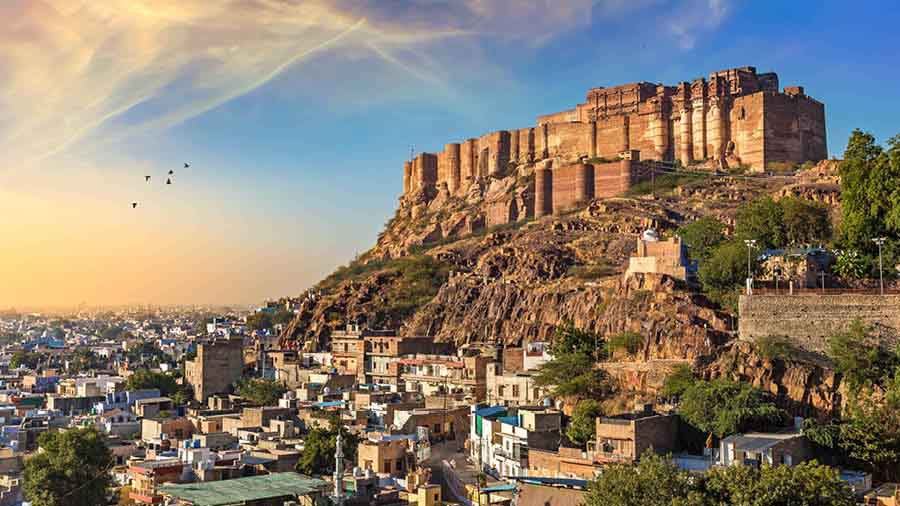Monikers can create lofty expectations. Almost every big city in Rajasthan has one. After three days in India’s Golden City, I can safely say that Jaisalmer deserves its golden halo. Ask anyone who’s been to Jaisalmer and you’ll hear about a golden hue that typifies their experience, it’s not something you can pin down to a single experience. I experienced it during the golden hour — sunset amongst the dunes and also when the bright rays of the sun bathe the city’s legendary fort. I’ve criss-crossed Rajasthan over the years and there are few places that measure up to the magic moments is Jodhpur’s Mehrangarh Fort. My first trip to Jaisalmer nearly changed all that.
Luxury abode
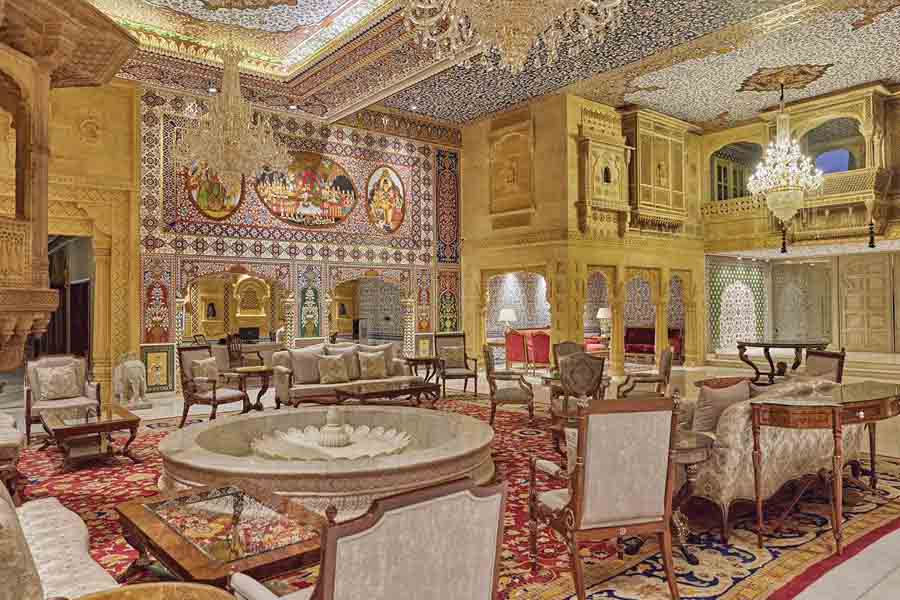
Interiors of Fort Rajwada Hotel Courtesy Fort Rajwada Hotel
The sun, sand, palaces and warm hospitality — Jaisalmer captures the essence of Rajasthan and was recently the only Indian city that figured in Booking.com’s listing of the ‘World’s 10 most welcoming cities’. You’re likely to find this warmth (and I’m not talking about the summer heat) at the Fort Rajwada Hotel, a luxury abode spread across six acres. This was one of the first luxury hotels that put Jaisalmer on the international tourism map.
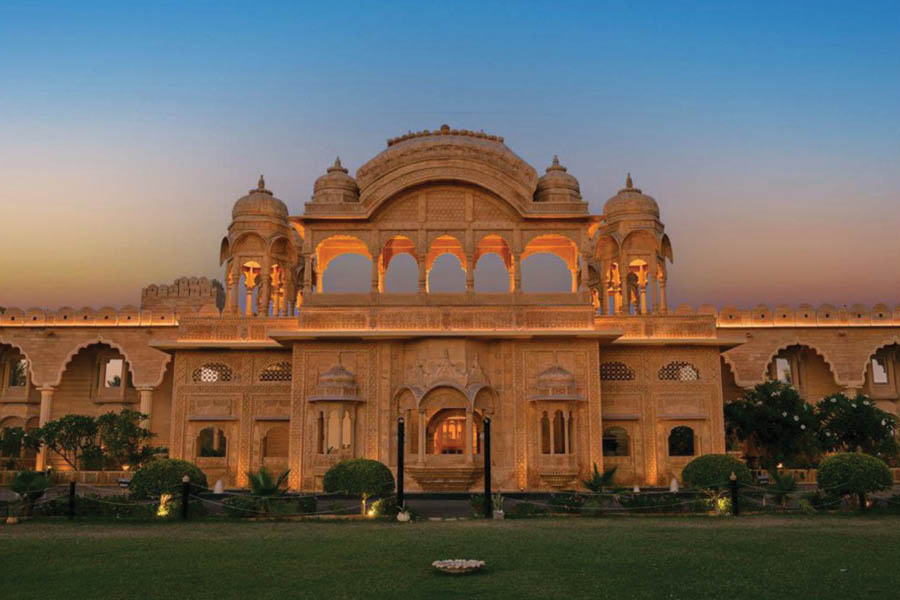
Another view of Fort Rajwada Hotel Fort Rajwada Hotel
Guests are usually greeted with a shower of petals — a pleasant surprise after a long journey. The resort is designed to capture the legacy of this historic destination and offers a choice of themed suites and rooms with plunge pools. Almost no room looks the same, a welcome break from cookie-cutter hotels. While a large Rajasthani thali (the dal baati churma is terrific) is a given, it’s Fort Rajwada’s choice of international cuisine and beverage programme that was the twist in the tale. It should come as no surprise; two out of the three guests at the hotel were international travellers.
All trails lead to 1156 AD
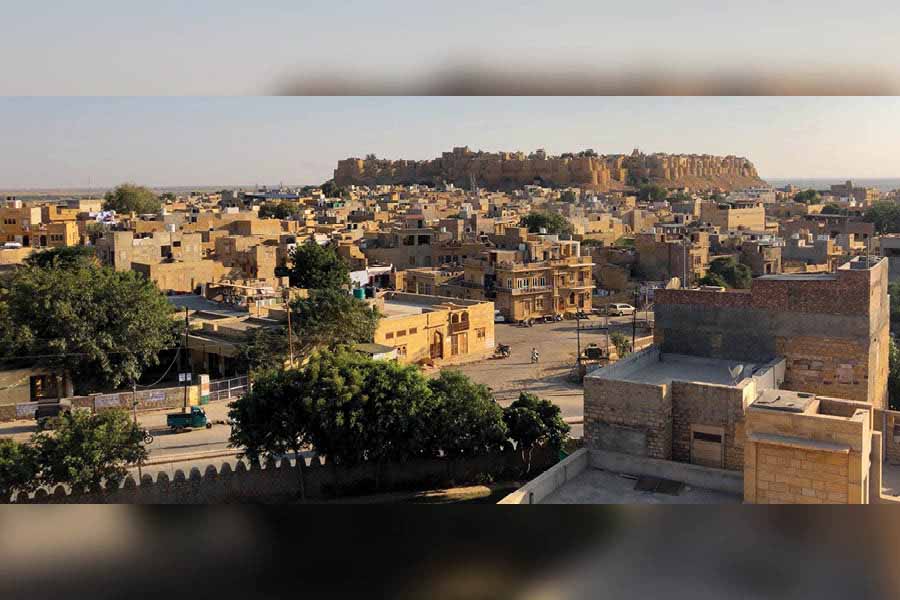
A panoramic view of Jaisalmer Unsplash
Jaisalmer was founded by Rawal Jaisal or Jaisal Singh in 1156 AD. Mer translates to fort. Now, you get the drift. The city’s power emanated from its fort — it still does. For centuries, the kingdom thrived on revenue levies from caravans, since Jaisalmer was a key stop along the trading routes in the middle ages. All this changed after Bombay emerged as a key trading port that eclipsed traditional land routes. Today the fort is a symbol of soft power, it’s where all trails in Jaisalmer begin.
The famous ‘Sonar Kella’
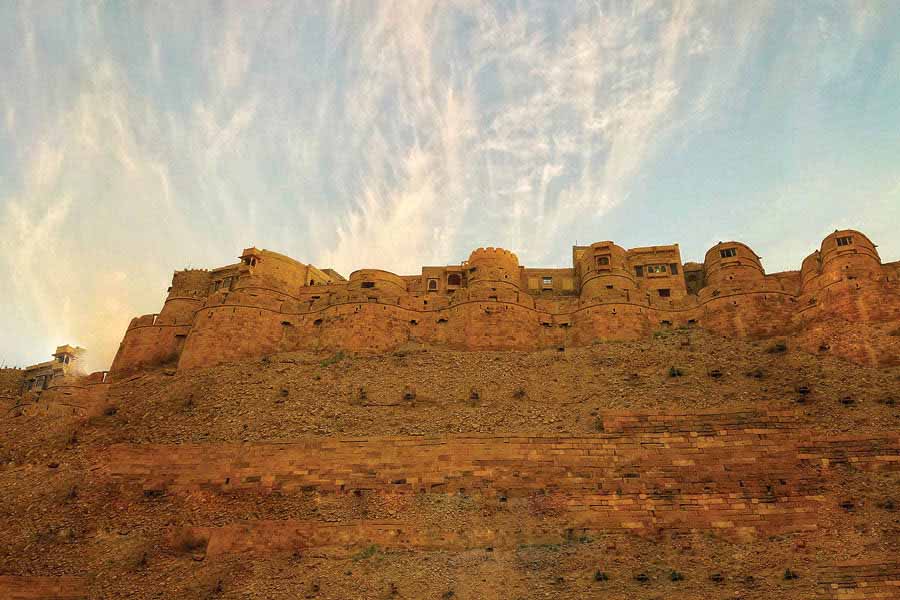
Jaisalmer Fort or the famous 'Sonar Kella' captured in Ray's film by the same name Unsplash
It was Satyajit Ray who probably romanticised Jaisalmer like never before. While most of us will remember Sonar Kella (the first film adaptation of Ray’s popular Feluda series), Ray also used the Jaisalmer fort as a backdrop in his 1969 film Goopy Gyen Bagha Byen (1969). That romance continues for Bengali filmmakers. Last year, the destination came to the fore in Joydip Mukherjee’s The Eken: Ruddhaswas Rajasthan, the second film from the Eken Babu (a fictional detective) franchise. The Jaisalmer Fort is one of the world’s only living forts (one reason why it made it to the UNESCO World Heritage List in 2013) with estimates of about 4,000 residents within its walls. The first settlements outside the Jaisalmer fort only came up in the 17th century.
Look in, look out

Gadisar Lake in Jaisalmer Ashwin Rajagopalan
It’s impossible to capture the sheer magnitude of the fort — the inner-wall perimeter is about 4 km long. You’ll probably need a drone camera to do any justice. I tried unsuccessfully over two days for that perfect ‘money shot’ of the fort and gave up. That certainly adds to the appeal of the fort. There are spots like Patwaon Ki Haveli and Vyas Ki Chaatri, which look magnificent around sunset. It gives you panoramic views of the fort but it’s impossible to capture that golden glow from the sandstone. A walk around the fort will lead you to vantage points — my favourite spot is Desert Boy’s Café that offers sweeping views of Jaisalmer. I spent half a day walking through the winding alleys (the fort rises above a height of 76 metres around the surrounding area) without a specific plan. It’s a great way to explore this magical fort with its share of historical temples, including a complex of seven iconic Jain temples, souvenir stores and food stops. I did pause for Jaisalmer’s favourite sweet treat — the ghotua (a soft yet grainy laddoo made with gram flour, ghee and sugar) at Dhanraj Ranmal Bhatia, a local legend.
Go for gold
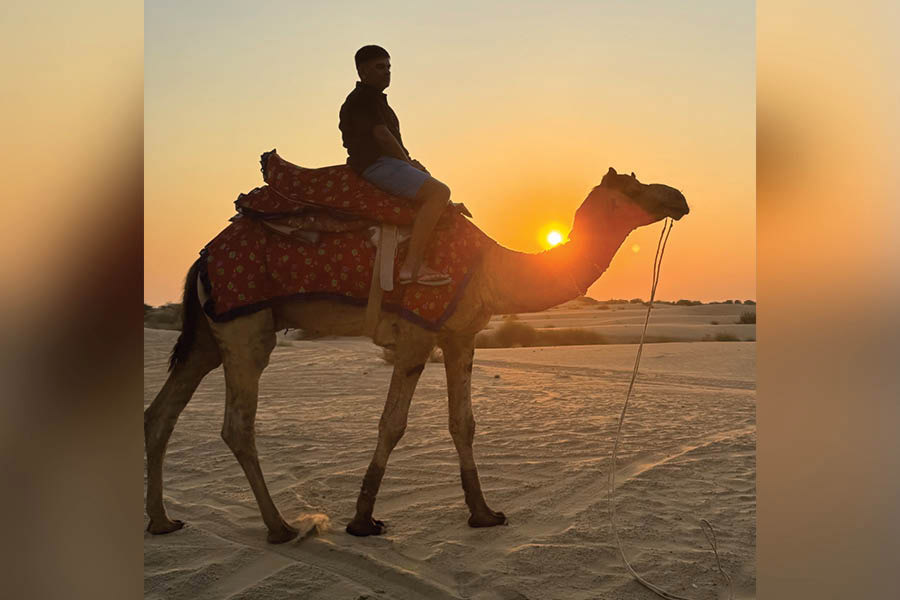
Camel ride is highly recommended — those ups and downs in a dune can be more thrilling than a roller coaster Ashwin Rajagopalan
If I had to pick a highlight during my three-day Jaisalmer trip it would be the golden glow as the sun went down behind the sand dunes of the Thar. Fort Rajwada organises curated desert experiences — Rajasthan at its very best. While you can go dune bashing, I’d also recommend a camel ride — those ups and downs in a dune can be more thrilling than a roller coaster, that culminates with a sunset experience in a secluded patch in the desert. It’s best to plan your trip before the end of March when temperatures begin to soar. Jaisalmer’s unique location offers an array of experiences — some that will have to wait for my next visit here. There’s Kuldhara, an abandoned village that has been on the radar for its spooky, almost paranormal appeal, Akal Wood Fossil Park — with fossilised trees and plants that date back 180 million years and the calming waters of the Gadisar Lake, where I caught my first sunset in Jaisalmer. But most of all, it’s Jaisalmer’s golden hue that you can only experience if you get here.


